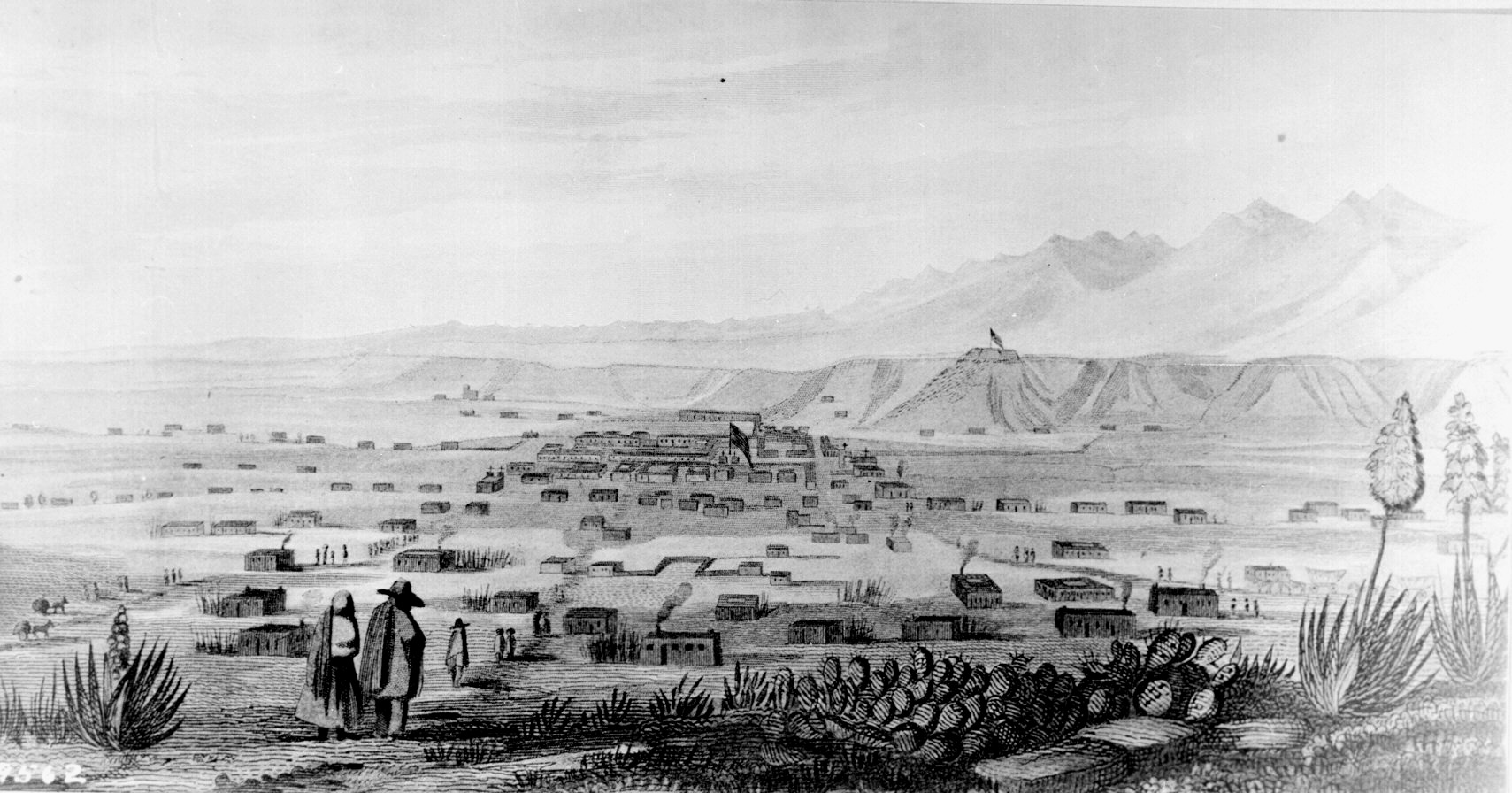|
Jose Chacón Medina Salazar Y Villaseñor
José Chacón Medina Salazar y Villaseñor (1668 - ??) was a Spanish official who served as Governor of New Mexico between 1707 and 1712. Salazar y Villaseñor was Marquis de Peñuela and Knight of the Order of Santiago. Early life Jose Chacón Medina Salazar y Villaseñor was born in 1668. He joined the in his youth, eventually becoming an of the Marines. New Spain He was appointed[...More Info...] [...Related Items...] OR: [Wikipedia] [Google] [Baidu] |
Spanish Governors Of New Mexico
Spanish Governors of New Mexico were the political chief executives of the province of Santa Fe de Nuevo México (New Mexico) between 1598, when it was established by an expedition by Juan de Oñate, and 1822, following Mexico's declaration of independence. New Mexico became a territory of the United States beginning in 1846, and a state in 1912. History In 1598, Juan de Oñate pioneered 'The Royal Road of the Interior Land', or '' El Camino Real de Tierra Adentro'', between Mexico City and the Tewa village of 'Ohkay Owingeh', or San Juan Pueblo, founding the Nuevo México Province under the authority of Philip II. He also founded the settlement ''(a Spanish pueblo)'' of San Juan on the Rio Grande near the Native American Pueblo. In 1610, Pedro de Peralta, then governor, established the settlement of Santa Fe in the region of the Sangre de Cristo Mountains on the Rio Grande. Missions were established for conversions and agricultural industry under the authority of the govern ... [...More Info...] [...Related Items...] OR: [Wikipedia] [Google] [Baidu] |
San Miguel Mission
San Miguel Chapel, is a Spanish colonial mission church in Santa Fe, New Mexico. Originally built around 1610, it is often referred to as the oldest church building in the continental United States. The church was rebuilt twice, once in the mid to late 17th century, and again in 1710 following the Pueblo Revolt. In both cases earlier pieces of the building may have been reused, though it is unclear to what extent. The wooden reredos, which includes a wooden statue of Saint Michael dating back to at least 1709, was added in 1798. The church is a contributing property in the Barrio De Analco Historic District, which is a U.S. National Historic Landmark. and As of 2020, Mass is still offered at the chapel on the 1st Sunday of the month at 3pm. History The original San Miguel church was probably built shortly after the founding of Santa Fe in 1610 and was the first church in the new settlement. It was built across the Santa Fe River from the ''villa'' proper in an are ... [...More Info...] [...Related Items...] OR: [Wikipedia] [Google] [Baidu] |
Colonial Governors Of Santa Fe De Nuevo México
Colonial or The Colonial may refer to: * Colonial, of, relating to, or characteristic of a colony or colony (biology) Architecture * American colonial architecture * French colonial architecture * Spanish colonial architecture Automobiles * Colonial (1920 automobile), the first American automobile with four-wheel brakes * Colonial (Shaw automobile), a rebranded Shaw sold from 1921 until 1922 * Colonial (1921 automobile), a car from Boston which was sold from 1921 until 1922 Commerce * Colonial Pipeline, the largest oil pipeline network in the U.S. * Inmobiliaria Colonial, a Spanish corporation, which includes companies in the domains of real estate Places * The Colonial (Indianapolis, Indiana) * The Colonial (Mansfield, Ohio), a National Register of Historic Places listing in Richland County, Ohio * Ciudad Colonial (Santo Domingo), a historic central neighborhood of Santo Domingo * Colonial Country Club (Memphis), a golf course in Tennessee * Colonial Country Club (Fort Wo ... [...More Info...] [...Related Items...] OR: [Wikipedia] [Google] [Baidu] |
Lease
A lease is a contractual arrangement calling for the user (referred to as the ''lessee'') to pay the owner (referred to as the ''lessor'') for the use of an asset. Property, buildings and vehicles are common assets that are leased. Industrial or business equipment are also leased. In essence, a lease agreement is a contract between two parties: the lessor and the lessee. The lessor is the legal owner of the asset, while the lessee obtains the right to use the asset in return for regular rental payments. The lessee also agrees to abide by various conditions regarding their use of the property or equipment. For example, a person leasing a car may agree to the condition that the car will only be used for personal use. The term rental agreement can refer to two kinds of leases: * A lease in which the asset is tangible property. Here, the user '' rents'' the asset (e.g. land or goods) ''let out'' or ''rented out'' by the owner (the verb ''to lease'' is less precise because it c ... [...More Info...] [...Related Items...] OR: [Wikipedia] [Google] [Baidu] |
Pueblo Of San Juan
Ohkay Owingeh (, ), known by its Spanish name as San Juan Pueblo from 1598 to 2005, is a pueblo in Rio Arriba County, New Mexico. For statistical purposes, the United States Census Bureau has defined that community as a census-designated place (CDP). Ohkay Owingeh is also the federally recognized tribe of Pueblo people inhabiting the town. Name Ohkay Owingeh was previously known as San Juan Pueblo until returning to its pre-Spanish name in November 2005. The Tewa name of the pueblo means "place of the strong people". Ohkay Owingeh has the ZIP code 87566 and the U.S. Postal Service prefers that name for addressing mail, but accepts the alternative name San Juan Pueblo. The community was also formally known as the San Juan Indian Reservation. Geography Its elevation is and it is located at . One of its boundaries is contiguous with Española, about north of Santa Fe. History The pueblo was founded around 1200 AD during the Pueblo III Era. By tradition, the Tewa peop ... [...More Info...] [...Related Items...] OR: [Wikipedia] [Google] [Baidu] |
Navajo People
The Navajo or Diné are an Native Americans in the United States, Indigenous people of the Southwestern United States. Their traditional language is Navajo language, Diné bizaad, a Southern Athabascan language. The states with the largest Diné populations are Arizona (140,263) and New Mexico (108,305). More than three-quarters of the Diné population resides in these two states.American Factfinder United States Census Bureau The overwhelming majority of Diné are enrolled in the Navajo Nation. Some Diné are enrolled in the Colorado River Indian Tribes, another federally recognized tribe. With more than 399,494Becenti, Arlyssa [...More Info...] [...Related Items...] OR: [Wikipedia] [Google] [Baidu] |
Pueblo Revolt
The Pueblo Revolt of 1680, also known as Popé, Popé's Rebellion or Po'pay's Rebellion, was an uprising of most of the Indigenous Pueblo people against the Spanish Empire, Spanish colonizers in the province of Santa Fe de Nuevo México, larger than present-day New Mexico. Incidents of brutality and cruelty, coupled with persistent Spanish policies such as those that occurred in 1599 and resulted in the Ácoma Massacre, stoked animosity and gave rise to the eventual Revolt of 1680. The persecution and mistreatment of Pueblo people who adhered to traditional religious practices was the most despised of these. Scholars consider it the first Native American religions, Native American religious traditionalist revitalization movement. The Spaniards were resolved to abolish Paganism, pagan forms of worship and replace them with Christianity. The Pueblo Revolt killed 400 Spaniards and drove the remaining 2,000 settlers out of the province. The Spaniards returned to New Mexico twelve years ... [...More Info...] [...Related Items...] OR: [Wikipedia] [Google] [Baidu] |
Santa Fe, New Mexico
Santa Fe ( ; , literal translation, lit. "Holy Faith") is the capital city, capital of the U.S. state of New Mexico, and the county seat of Santa Fe County. With over 89,000 residents, Santa Fe is the List of municipalities in New Mexico, fourth-most populous city in the state and the principal city of the Santa Fe metropolitan statistical area, which had 154,823 residents in 2020. Santa Fe is the third-largest city in the Albuquerque, New Mexico, Albuquerque–Santa Fe–Los Alamos, New Mexico, Los Alamos Albuquerque–Santa Fe–Los Alamos combined statistical area, combined statistical area, which had a population of 1,162,523 in 2020. Situated at the foothills of the Sangre de Cristo Mountains, the city is at the highest altitude of any U.S. state capital, with an elevation of 6,998 feet (2,133 m). Founded in 1610 as the capital of ', a province of New Spain, Santa Fe is the oldest List of capitals in the United States, state capital in the United States and the earliest E ... [...More Info...] [...Related Items...] OR: [Wikipedia] [Google] [Baidu] |
Santa Fe De Nuevo México
Santa Fe de Nuevo México (; shortened as Nuevo México or Nuevo Méjico, and translated as New Mexico in English) was a province of the Spanish Empire and New Spain, and later a territory of independent Mexico. The first capital was San Juan de los Caballeros (at San Gabriel de Yungue-Ouinge) from 1598 until 1610, and from 1610 onward the capital was La Villa Real de la Santa Fe de San Francisco de Asís. The name of "New Mexico", the capital in Santa Fe, the gubernatorial office at the Palace of the Governors, ''vecino'' citizen-soldiers, and rule of law were retained as the New Mexico Territory and later state of New Mexico became part of the United States. The New Mexican citizenry, primarily consisting of Hispano, Pueblo, Navajo, Apache, and Comanche peoples, became citizens of the United States as a result of the Treaty of Guadalupe Hidalgo (1848). ' is often incorrectly believed to have taken its name from the post-independent nation of Mexico. But as early as ... [...More Info...] [...Related Items...] OR: [Wikipedia] [Google] [Baidu] |
Francisco Cuervo Y Valdés
Francisco Cuervo y Valdés (16 June 1651 – 1714) was a Spanish politician who governed Nuevo León (1687-1688), Nueva Extremadura (1698–1703), New Philippines (1698–1702), and Santa Fe de Nuevo México (1704–1707). Early years Cuervo y Valdés was born on June 16, 1651, in Santa María de Grado (in Asturias, Spain). His family was of noble background. Marc Simmons (2003)Hispanic Albuquerque, 1706-1846 University of New Mexico Press, pages 53 - 55. Cuervo y Valdes was a Knight of Santiago and a Treasury official in Guadalajara.New Mexico Office of the State Historian: Cuervo y Valdes, Francisco . Publisher in New Mexico State Record Center and Archives. Consulted between December 24, 2011 and July 28, 2012. In 1678, he emigrated to New Spai ... [...More Info...] [...Related Items...] OR: [Wikipedia] [Google] [Baidu] |
Admiral
Admiral is one of the highest ranks in many navies. In the Commonwealth nations and the United States, a "full" admiral is equivalent to a "full" general in the army or the air force. Admiral is ranked above vice admiral and below admiral of the fleet, or fleet admiral. Etymology The word in Middle English comes from Anglo-French , "commander", from Medieval Latin , . These evolved from the Arabic () – () (), "king, prince, chief, leader, nobleman, lord, a governor, commander, or person who rules over a number of people" and (), the Arabic definite article meaning "the." In Arabic, admiral is also represented as (), where al-Baḥr (البحر) means the sea. The 1818 edition of Samuel Johnson's '' A Dictionary of the English Language'', edited and revised by the Rev. Henry John Todd, states that the term "has been traced to the Arab. emir or amir, lord or commander, and the Gr. , the sea, q. d. ''prince of the sea''. The word is written both with and without ... [...More Info...] [...Related Items...] OR: [Wikipedia] [Google] [Baidu] |





